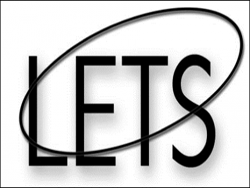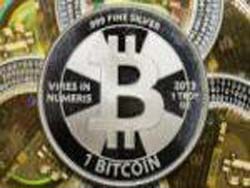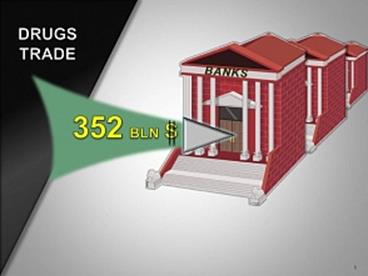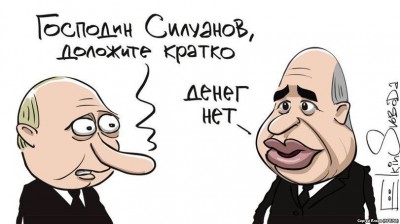
Although the mass of money issued by Central banks (cash) and commercial banks (cash and Deposit money) is growing rapidly, the world is facing a serious cash crisis. Thus, according to the IMF and the Bank for international settlements (BIS), the total volume of money supply of all countries of the world, expressed by the M2 aggregate (cash + non-cash Deposit money banks), in 2010 amounted to a little over 50 trillion. $ . By the beginning of 2015 the total money supply in the world is more than 71 trillion. $ but hard work of printing machines of the banks facilitate the global economy to no avail.
First, the new money will immediately go to financial markets to service the speculators, the real economy continues to face severe monetary hunger. Secondly, increased volatility of money (its purchasing power and exchange rates); money lose their basic economic functions (measure of value, medium of exchange, etc.). That is, money ceases to be money, becoming a tool of speculation and redistribute wealth in the interests of the owners of the money (bankers, who have the right to issue money).
The reaction of society and the part of entrepreneurs who do not belong to the circle of owners of money are actions aimed at reducing the dependence on official money and including different projects on production of new types of money. Such money is called differently: alternative, optional, parallel, private, local, regional, cooperative, free, barter, virtual.
One of the main authorities on issues of alternative money is a Belgian economist Bernard Lietaer (Bernard Lietaer), which at one time was a proponent of the Euro. His views on the possibility of using alternative money, he outlined in “THE FUTURE OF MONEY: A New Way to Create Wealth, Work and a Wiser World” (the book was published in Russia under the title “the Future of money”). According to the estimates of Later, today there are at least 2500 alternative monetary systems.
Most often, the authors describing the world of alternative money, call them “private money”. The choice of this name was influenced by the work of the famous Austrian economist Friedrich von Hayek (1899-1992) “Private money”, released in 1976. The author, rightly exposing the criticism of the official monetary system, believed the cause of their faults in that they were based on money issued by the state. And here F. von Hayek was wrong, since many Central banks, issuing cash, were and remain non-state institutions (primarily the Federal reserve). In addition, most of the weight of non-cash, or Deposit, of money issued by commercial banks, with rare exceptions, are private organizations. Why the name “private money” failed. In fact, F. von Hayek spoke about the money that would have been an alternative to money issued by world financial oligarchy. Austrian economist considered money as a normal market commodity, advocated a system of decentralized money emission and the cultivation of competition between different types of private money.
And when exactly were arranged monetary system of many countries. Specialists on alternative money often remember the time “free banking era” (Free Banking Era) in the United States, which accounted for 1837-1866, Over these three decades in America was released about 8 thousand different kinds of money. The issue of money was developed by individual States, municipalities, private banks, railroads, stores, restaurants, Church communities and even individuals. Then the issuers of money was called “wild banks” (wildcat banks). Something similar existed in other capitalist countries. For example, in the UK, despite the arrival in 1694 of the Central Bank (Bank of England), the issue of banknotes until the beginning of the First world war have been studied by many commercial banks. In Scotland and Northern Ireland, the state still is licensing private banks to issue their own paper money.
Quite often the main alternative form of money called “free money”. The term was put into circulation by the German economist and businessman Silvio Gesell (1862-1930), author of the theory of “free economy”. In complete form the idea of “free economy” was formulated in the fundamental work Gesell’s “Free land and free money as the natural economic order” (1916). In the English translation of the book known as the “Natural economic order”. Under “summary of Gesell money understood money, free from percent. Moreover, this money can have a negative percentage, which dramatically enhances their ability to perform the function of circulation and prevents the conversion of money into treasure, the idle capital. John Maynard Keynes in his “General theory of employment, interest and money” have stressed the effects of a monetary theory of Gesell in his own concept. “I am convinced that the future will learn more from Gesell than from Marx,” wrote Keynes.
The first really big experiment on introduction of “free money” began in 1932 in a small Austrian town of Wörgl. Thanks to the experiment in the city, was built bridge, improved road conditions, increased investment in public services. And at a time when many European countries were forced to deal with rising unemployment, unemployment in Wörgl dropped for the year by 25 percent. When over 300 communities in Austria are interested in this model, the Austrian national Bank saw this as a threat to their monopoly and prohibited the printing of free local money. However, the experiment in Wörgl became known in other countries “free money” began to appear around the world (usually at the level of individual cities and districts).
“Free money” in different variations exist to this day. The economic situation in many countries is deteriorating so fast that to the issue of local money start not only small towns and depressed rural areas but also large cities. At the end of 2012, the media reported that Bristol became the first city in the United Kingdom, which got its own monetary unit. On its purchasing power it is equal to a pound. The city has printed banknotes of different denominations for a total amount of 125 thousand pounds. At the same time, most of the payments will be held in the form of cash. At the start of the programme, it was reported that it has agreed to accept the participation of 350 organizations and another 1,000 may join later. The incentive to participate in the project, shop owners, where will flock to local money, was the guarantee of the authorities of Bristol to carry out free exchange the local pound on the national (with retention of fee).
Local money already circulating in many major cities in the U.S. (in California, Wisconsin, Oregon, Pennsylvania, Michigan and Massachusetts). For example, in the Berkshires (Massachusetts), where more than 130 thousand people, in 2006 he introduced the currency called BerkShares. The project involved about 350 organizations Berkshire. BerkShares local currency can be exchanged for official currency at the rate of 95 dollars for 100 BerkShares. It is important that the implementation of the project local currency were five banks involved in their 12 offices you can exchange.
With the end of the twentieth century a popular alternative form of money has become a Trading system local exchange (Local Exchange Trading System, LETS). LETS can be represented as a Multicommodity and multilateral system of barter, which is a special non-profit organization. To increase the efficiency of barter operations use the local currency of the community (cooperative). It can be called a barter currency in which the transaction is expressed; special organization that issues currency can use it to buy goods from the members of the cooperative, then to sell to other members of the cooperative, maintains the accounts of participants, provides them with the necessary loans. LETS – the General name of systems, each individual system may have its own name, taking into account the location of operations, business profile, etc. most of the systems uses its own currency on an interest free basis, money therefore LETS can be seen as a kind of “free money”.
Not less popular alternative money known as “Itatsky hour” (Ithaca hour). Often this currency is called simply: watch. It’s the local currency, which appeared in 1991 in the American city of Ithaca (new York). Its founder was Paul Glover. The introduction of the new currency led to increased purchasing power of the local population, revitalize agriculture in the area, as people began to buy more local produce. Itasca currency is a type of “labour money”, the purchasing power of which depends only on the magnitude of the labour costs of the person. And labor costs in the system are determined by the Glover.
Unlike many local money systems that are based only on entries in the computers (a kind of electronic money), Itasca currency is cash and is a paper of high quality with good protection against counterfeiting. Initially each member of the system received bills in the amount of 4 hours (the equivalent of 40 dollars). Later banknotes with other denominations. Set the exchange rate irakskogo one hour to $ 10. For example Italska hours were created similar systems in American cities of Madison (Wi) and Corvallis (Oregon). There are analogues of Itachi currency in other countries. As you can see, Itasca currency has similarities with the well-known in the Soviet Union the workday – a measure of estimation and the form of accounting of the quantity and quality of labour in collective farms in the period from 1930 to 1966.
Do not stand aside from the alternative of money and some banks. The most striking example is the Swiss WIR project, founded in 1934 as a mechanism of overcoming of payment crisis during the great depression. Today WIR is a cooperative Bank and using their money, have received legal status. They have a cashless form and serve the members of the cooperative.








